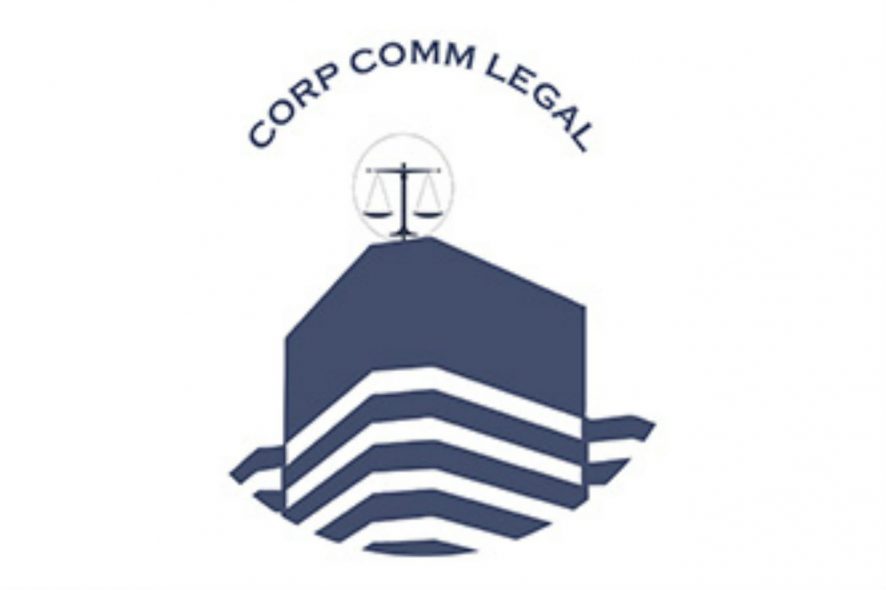Corporate administration is to a huge degree, a lot of components through which outcast financial specialists shield themselves from confiscation by insiders (La Porta et al. 2000). The theme of corporate governance has attained prominence particularly since the 1980s and all the more so after the code of corporate administration issued by the Cadbury advisory group. The well-known Cadbury Committee characterised “corporate governance” in its report (Financial Aspects of Corporate Governance, distributed in 1992) as “the framework by which organisations are coordinated and controlled”.
In accordance with the Cadbury Council, the Kumar Mangalam Birla Committee additionally issued a code of corporate administration for organisations in India. As part of the corporate culture prevalent worldwide, directors are in charge of the administration of their organisations. The investors’ job in administration is to choose the director and the administrators and to fulfill themselves that a fitting administration structure is set up.[1]

I. Evolution of Legal Framework of Corporate Governance in India
- Prior to Independence and Four Decades into Independence
Indian associations/corporate entities were bound by colonial guidelines and a large portion of the principles and guidelines took into account the impulses and likes of the British employers. The Companies Act was enacted in 1866 and was amended in 1882, 1913 and 1932. Partnership Act was enacted in 1932. These enactments had a managing organisation model as a focus as people/business firms went into a legitimate contract with business entities to manage the latter. This period was an era of misuse/abuse of resources and shunning of obligations by managing specialists because of scattered and unprofessional proprietorship.
Soon after independence, there was interest among industrialists for production of a lot of essential items for which the Government directed and dictated fair prices. This was the point at which the Tariff Commission and the Bureau of Industrial Costs and Prices were set up by the Government. Industries (Development and Regulation) Act and Companies Act were introduced into the legal system in 1950s. 1960s was a time of setting up of heavy industries in addition to the routine affairs. The period between 1970s to mid-1980s was a time of cost, volume and profit examination, as a vital piece of the cost accounting activities.
- Coming of Age
India has been distinctly looked upon by the associations/organisations worldwide with the objective of making inroads into untapped new markets. Dynamic firms in India made an endeavour to put the frameworks of good corporate administration in place from the word go, whether or not any regulations were in place. However, the scenario was not too encouraging, being too promoter-centric and good governance norms given a go by for the sake of convenience or comfort of the promoters.
Realising the need for governing the corporates more effectively and professionally to make them globally competitive, there have been a number of discourses and occasions prompting the advancement of corporate governance. The fundamental code for corporate administration was proposed by the Chamber of Indian Industries (CII) in 1998. The definition proposed by CII was—corporate governance manages laws, methods, practices and understood principles that decide an organisation’s capacity to take administrative choices—specifically its investors, banks, clients, the State and the representatives.
II. Reformation in Corporate Governance
- The First Phase of India’s Corporate Governance Reforms: 1996-2008
The primary or the first phase of India’s corporate governance reforms were focussed at making Audit Committees and Boards more independent, focussed and powerful supervisor of management and also of aiding shareholders, including institutional and foreign shareholders/investors, in supervising management. These reform efforts were channelled through a number of different paths with both the Ministry of Corporate Affairs (MCA) and the Securities and Exchange Board of India (SEBI) playing important roles.
(a) CII—1996
In 1996, CII taking up the first institutional initiative in the Indian industry took a special step on corporate governance. The aim was to promote and develop a code for companies, be in the public sectors or private sectors, financial institutions or banks, all the corporate entities. The steps taken by CII addressed public concerns regarding the security of the interest and concern of investors, especially the small investors; the promotion and encouragement of transparency within industry and business, the necessity to proceed towards international standards of disclosure of information by corporate bodies, and through all of this to build a high level of people’s confidence in business and industry. The final draft of this Code was introduced in April 1998[2]
(b) Report of the Committee (Kumar Mangalam Birla) on Corporate Governance
Noted industrialist, Mr Kumar Mangalam Birla was appointed by SEBI—as Chairman to provide a comprehensive vista of the concern related to insider trading to secure the rights of several investors. The suggestions insisted on the listed companies for initial and continuing disclosures in a phased manner within specified dates, through the listing agreement. The companies were made to disclose separately in their annual reports, a report on corporate governance delineating the steps they have taken to comply with the recommendations of the Committee. The objective was to enable the shareholders to know, where the companies, in which they have invested, stand with respect to specific initiatives taken to ensure robust corporate governance.
(c) Clause 49
The Committee also realised the importance of auditing body and made many specific suggestions related to the constitution and function of Board Audit Committees. At that time, SEBI reviewed it’s listing contract to include the recommendations. These rules and regulations were listed in Clause 49, a new section of the listing agreement which came into force in phases of 2000 and 2003.
(d) Report of the Advisory Group on Corporate Governance: Standing Committee on International Financial Standards and Code—March 2001
The advisory group tried to compare the potion of corporate governance in India vis-à-vis the international best standards and advised to improve corporate governance standards in India.
(e) Report of the Consultative Group of Directors of Banks—April 2001
The corporate governance of directors of banks and financial institutions was constituted by Reserve Bank to review the supervisory role of boards of banks and financial institutions and to get feedback on the activities of the boards vis-à-vis compliance, transparency, disclosures, audit committees, etc. and provide suggestions for making the role of Board of Directors more effective with a perspective to mitigate or reduce the risks.
(f) Report of the Committee (Naresh Chandra) on Corporate Audit and Governance Committee—December 2002
The Committee took the charge of the task to analyse, and suggest changes in different areas like—the statutory auditor and company relationship, procedure for appointment of Auditors and determination of audit fee, restrictions if required on non-auditory fee, measures to ensure that management and companies put forth a true and fair statement of financial affairs of the company.
(g) SEBI Report on Corporate Governance (N.R. Narayan Murthy)—February 2003
So as to improve the governance standards, SEBI constituted a committee to study the role of independent directors, related parties, risk management, directorship and director compensation, codes of conduct and financial disclosures.
(h) (Naresh Chandra Committee II) Report of the Committee on Regulation of Private Companies and Partnerships
As large number of private sector companies were coming into the picture there was a need to revisit the law again. In order to build upon this framework, the Government constituted a committee in January 2003, to ensure a scientific and rational regulatory environment. The main focus of this report was on (a) the Companies Act, 1956; and (b) the Partnership Act, 1932. The final report was submitted on 23-7-2003.
(i) Clause 49 Amendment—Murthy Committee
In 2004, SEBI further brought about changes in Clause 49 in accordance with the Murthy Committee’s recommendations. However, implementation of these changes was postponed till 1-1-2006 because of lack of preparedness and industry resistance to accept such wide-ranging reforms. While there were many changes to Clause 49 as a result of the Murthy Report, governance requirements with respect to corporate boards, audit committees, shareholder disclosure, and CEO/CFO certification of internal controls constituted the largest transformation of the governance and disclosure standards of Indian companies.[3]
- Second Stage of Corporate Governance—After Satyam Scam
India’s corporate community experienced a significant shock in January 2009 with damaging revelations about board failure and colossal fraud in the financials of Satyam. The Satyam scandal also served as a catalyst for the Indian Government to rethink the corporate governance, disclosure, accountability and enforcement mechanisms in place. Industry response shortly after news of the scandal broke, the CII began examining the corporate governance issues arising out of the Satyam scandal. Other industry groups also formed corporate governance and Ethics Committees to study the impact and lessons of the scandal. In late 2009, a CII task force put forth corporate governance reform recommendations.
In its report the CII emphasised the unique nature of the Satyam scandal, noting that—Satyam is a one-off incident. The overwhelming majority of corporate India is well run, well regulated and does business in a sound and legal manner. In addition to the CII, the National Association of Software and Services Companies (Nasscom, self-described as—the premier trade body and the Chamber of Commerce of the IT-BPO industries in India) also formed a Corporate Governance and Ethics Committee, chaired by N.R. Narayana Murthy, one of the founders of Infosys and a leading figure in Indian corporate governance reforms. The Committee issued its recommendations in mid-2010.[4]
III. Legal Framework on Corporate Governance[5]
- The Companies Act, 2013.— consists of law provisions concerning the constitution of the board, board processes, board meetings, independent directors, audit committees, general meetings, party transactions, disclosure requirements in the financial statements and etc.
- SEBI Guidelines.—SEBI is a governing authority having jurisdiction and power over listed companies and which issues regulations, rules and guidelines to companies to ensure the protection of investors.
- Standard Listing Agreement of Stock Exchanges.—is for those companies whose shares are listed on the stock exchanges.
- Accounting Standards Issued by the Institute of Chartered Accountants of India (ICAI).— ICAI is an independent body, which issues accounting standards providing guidelines for disclosures of financial information. In the new Companies Act, 2013 Section 129 provides that the financial statements would give a fair view of the state of affairs of the companies, following the accounting standards given under Section 133 of the Companies Act, 2013. It is further given that the things contained in such financial statements should be in compliance with the accounting standards.
- Secretarial Standards issued by the Institute of Company Secretaries of India (ICSI).—ICSI is an independent body, which has secretarial standards in terms of the provisions of the new Companies Act. ICSI has issued secretarial standards on “Meetings of the Board of Directors” (SS-1) and secretarial standards on “General Meetings” (SS-2). Given secretarial standards have come into force from 1-7-2015. Companies Act, 2013, Section 118(10) provides that every company (other than one person company) shall observe secretarial standards specified as such by the ICSI with respect to general and Board meetings.
IV. Landmark Cases of failure of Corporate Governance
- Satyam Case
Satyam Computer Services scandal was a corporate scandal affecting India-based company Satyam Computer Services in 2009, in which Chairman Ramalinga Raju admitted that the company’s accounts had been manipulated. The Satyam scandal was a Rs 7000 crore corporate scandal in which accounts had been manipulated. On 7-1-2009, Ramalinga Raju sent an e-mail to SEBI, wherein he confessed to falsify the cash and bank balances of the company. Weeks before the scam began to unravel with his popular statement that he was riding a tiger and did not know how to get down without being killed. Raju had said in an interview that Satyam, the fourth largest IT company, had a cash balance of Rs 4000 crore and could leverage it further to raise another Rs 15,000-20,000 crore.
Ramalinga Raju was convicted with 10 other members on 9-4-2015. Ramalinga Raju and three others were given six months jail term by Serious Fraud Investigation Office (SFIO) on 8-12-2014[6]. Even auditors Price Waterhouse Coopers (PWC) had to face a hard time.
- Ricoh Case
The saga at Ricoh India demonstrates that the radiance of good governance that is automatically ascribed to MNCs is not ensured the result. In spite of administrative interference after the Satyam scam and legislative amendments to tighten the governance framework [Companies Act, 2013, SEBI (Listing Obligations and Disclosure Requirements) Regulations, etc.] the Ricoh scene was almost a replica of the Satyam episode in terms of accounting fraud and resultant fraud of stock prices interestingly without any promoter being in the saddle. Just a few corrupt managers were sufficient to obliterate the system with the usual failure of the main regulating institutions such as the auditors, credit rating agencies, independent directors of repute, committees of directors including the powerful audit committees manned by independent directors, etc.
- ICICI Bank Scam Case
It was the role of the Board in hurriedly giving a clean chit to its CEO without the results of an independent investigation released in the public domain in an apparent case of alleged nepotism, and its refusal to take any questions on the matter.
- Kingfisher Airlines and United Spirits Case
Mainly regarding illegal internal corporate funding to parties, falsifying accounts. It was entirely evident that assets had been transferred from United Spirits Ltd. (USL) to subsidise Kingfisher, that United Breweries (UB) Holdings was utilised as a channel for raising loans and giving them to his group, that intercorporate credits were given to related groups without the Board’s approval, accounts were inappropriately expressed, reviews were stage overseen, etc. during the period Mr Vijay Mallya was responsible for USL.
Sad but true. The list is getting longer by each passing month and newer corporate frauds are being detected at companies and banks which used to be torchbearers of good corporate governance.
V. Suggestions
According to the concerns given above, there is a huge range of responsibilities upon the directors of the companies to comply with the standards and best practices given in different laws and guidelines. Apart from the laws and norms suggested by various institutions from time to time, the companies are also expected to act responsibly towards the society as a whole because the corporates are so big in today’s time, that they have some impact on each and every citizen of the country equally. The burden on the organisations has already reduced as they are made to follow fixed guidelines and they are not expected to make any amends to that. It is also very important that all stakeholders also demonstrate their interest and active participation in the decision-making processes to make it a contributory job altogether. Government, banks, RBI, statutory authorities, independent directors—all need to come together to have a cohesive, foolproof system to eradicate the malaise of corporate misrule.
*Bhumesh Verma is Managing Partner at Corp Comm Legal and can be contacted at bhumesh.verma@corpcommlegal.in.
**Himani Singh is a Student Researcher with Corp Comm Legal (5th-year student, BA LLB, New Law College).
[1]Anubhav Pandey, Regulatory Framework for Corporate Governance in India, iPleaders, 20-5-2017 <https://blog.ipleaders.in/corporate-governance/>.
[2] Smita Jain, Corporate Governance—National and International Scenario, 33rd National Convention of Company Secretaries, p. A-71 <https://www.icsi.edu/media/webmodules/programmes/33nc/33souvearticle-smitajain.pdf>.
[3] SEBI, Recommendations of the Narayan Murthy Committee on the Revised Cl. 49–Corporate Governance–Press Release, last updated on 15-12-2003 <https://www.sebi.gov.in/media/press-releases/dec-2003/recommendations-of-the-narayana-murthy-committee-on-the-revised-clause-49-corporate-governance-press-release_17040.html>.
[4] Moneycontrol.com, What Changed in the Legal Landscape Post Satyam Scam, last updated on 11-1-2018 <https://www.moneycontrol.com/news/business/companies/what-changed-in-the-legal-landscape-post-satyam-scam-2480623.html>.
[5] Corporate Governance Framework in India, Mondaq, Vaish Associates, last updated on 8-1-2016 <http://www.mondaq.com/india/x/456460/Shareholders/Corporate+Governance+Framework+In+India>.
[6] 6 FE Online, Financial Express, last updated on 11-1-2018 <https://www.financialexpress.com/industry/what-was-satyam-scam-which-toppled-indias-fourth-largest-it-company-from-the-top-slots/1010389/>.







Hey thanx for sharing this blog over here. It seems useful to start career in clinical research. We will look forward for more updates.
Nice one explained in detailed manner
Nice Article. Thanks for sharing.